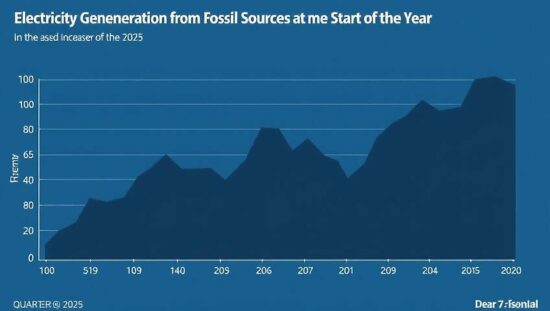Germany’s First Quarter Energy Report Reveals Shift in Power Generation
According to the German Federal Statistical Office (Destatis), the country’s power generation in the first quarter of 2025 saw a decline of 1.9 percent compared to the same period in 2024, with a total of 119.4 billion kilowatt-hours of electricity produced and fed into the grid.
Conventional energy sources, such as fossil fuels, accounted for more than half of the domestically produced power, with a share of 50.5 percent, up from 41.5 percent in the first quarter of 2024. This increase was mainly driven by a 19.3 percent rise in power generation from fossil fuels, reaching 60.2 billion kilowatt-hours.
On the other hand, the power generation from renewable energy sources, such as wind and solar, decreased by 17 percent to 59.1 billion kilowatt-hours, accounting for 49.5 percent of the total domestic power generation, down from 58.5 percent in the same period of the previous year.
The decline in renewable energy generation was mainly due to a significant drop in wind power, with a 29.2 percent decrease to 33.2 billion kilowatt-hours, resulting in a share of 27.8 percent of the total power mix, down from 38.5 percent in the first quarter of 2024.
Despite this, wind power remained the most important energy source for power generation in the first quarter of 2025. In contrast, photovoltaic power generation increased by 34.6 percent to 11 billion kilowatt-hours, with a share of 9.2 percent of the total power mix, up from 6.7 percent in the same period of the previous year.
The decrease in renewable energy generation was largely offset by the operation of conventional power plants, with the power generation from coal increasing by 15.3 percent to 32.3 billion kilowatt-hours, accounting for 27 percent of the total energy mix, just behind wind power.
Germany’s power imports rose by 14.9 percent in the first quarter of 2025, with a total of 19.3 billion kilowatt-hours of electricity imported, compared to 16.8 billion kilowatt-hours in the same period of the previous year. In contrast, the country’s power exports decreased by 3 percent to 16.2 billion kilowatt-hours, according to the statistics office.





